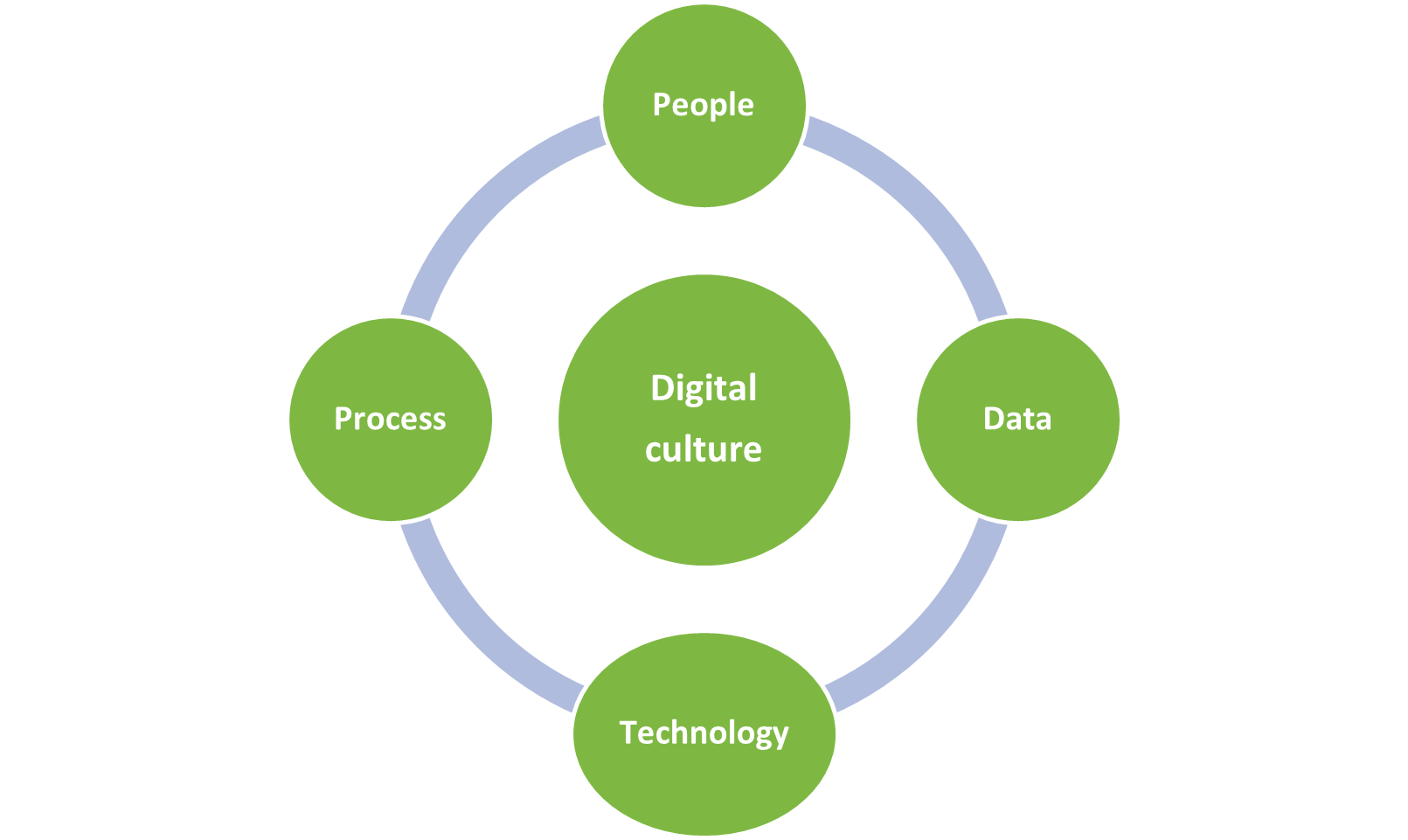
Building an Effective Digital FP&A Function
Introduction
FP&A teams need to adopt digitalization that combines their analytics capabilities, big data, and new technology such as artificial intelligence (AI), machine learning (ML), cloud adoption, and Robotic Process Automation (RPA). These components are essential for FP&A to analyze data in real-time using both internal and external databases, producing proactive and accurate business insights and foresight within shorter periods with minimal manual inputs, introducing real-time and standardized reporting for better performance management, and accordingly increasing credibility with shareholders as trusted business advisors.
The four pillars of an effective digital FP&A function

1. Data
Data is the fuel for running analytical algorithms or models. To build an effective digital FP&A function, the FP&A team needs to ensure a high level of data quality which increases the accuracy of the analytics applications. This can lead to better business decisions that boost business performance, improve internal processes, and give the organization a competitive edge. High-quality data can help expand the use of the digital analytics tools. If it is seen as trustworthy, business users are more likely to rely on it instead of basing decisions on gut feelings or their own sources.
Data also should shift from Excel spreadsheets and ERP systems to the cloud. Data migration to the cloud will support big data management, data accessibility, and ensure streams from both internal and external sources in real-time for better analysis and fast decision making.
FP&A should also ensure data standardization because the lack of standardized data is a major stumbling block for those who have invested in FP&A digitalization, and it might lead to a lack of integration and flawed reporting, misaligned KPIs between stakeholders, difficulty determining ROI, and reduced confidence in data by users.
Another important aspect that should be considered by FP&A is whether data complies with government laws, country regulations, internal policies, and business ethics. Any failure in data compliance with any of these might create a negative impact on either an individual or the organization. For example, fines, disqualifications, and in some cases, business discontinuity.
2. People
A high-performing strategic analytics FP&A team with the proper mindset and skill set is needed to build an effective digital FP&A function.
There are essential capabilities that are required of all FP&A professionals, such as relationship building, storytelling, collaboration, negotiation, and data insights. However, certain additional capabilities are needed for team members working in a modern digital FP&A function.
- The mindset: Instead of providing reports and commentary on historical data, a trusted FP&A business advisor identifies issues and opportunities. They do this through the use of solid business acumen, multi-sourced data, and advanced forms of analytics. Their job is to develop a wide range of strategic options, scenarios, and paths to help the organization achieve its business objectives in a highly dynamic environment.
- The skillset:
- Tech-savvy: An ability to leverage technology to quickly simplify, automate, integrate and analyze data. Along with an ability to lead digital transformation projects.
- Solid business acumen: A deep understanding of both the internal and external environments along with a solid grasp of the current competitive landscape.
- Intelligence: An ability to provide correlations between financial and non-financial data sources while using a model to provide management with realistic probabilities of all risks and opportunities.
- Strategy: The capability to have vision and provide innovative solutions. This is the admission ticket for FP&A to be involved in all strategic decision meetings.
3. Technology
Various technological innovations are creating an inflection point for the FP&A function in business. These innovations are essential enablers in building a digital FP&A function that can drive greater efficiencies, better insights, and more influence. Here are some of the technologies that can be adopted to digitize FP&A in your business:
- Robotic process automation: RPA works to reduce human task intervention. This is executed primarily by emulating a person, in other words, executing manual and repetitive tasks with high accuracy and continuously making decisions based on set rules. By investing in RPA, FP&A can reduce the time spent on back-office tasks such as copying and pasting data, standard data entry, moving files and folders, and making calculations. This time can be reallocated to strategic and high-value-add activities.
- Cloud: FP&A can adopt user-friendly enterprise performance management (EPM) cloud solutions to provide stakeholders with self-service access to data and insights. This helps decision-makers make fast decisions no matter where they are.
- Data visualization tools: FP&A can create customized real-time reports to suit each stakeholder’s needs. Complex numbers can be turned into simple messages through effective visualization tools.
- Advanced predictive tools: A digital FP&A function needs desktop statistical (DS) tools to enable statistical analysis and discovery visualization and analytic (DVA) tools to achieve powerful forecasting and predictions. For example, using a model to predict dynamic optimal inventory levels.
- Machine learning and artificial intelligence: FP&A can support strategic decision-making and apply advanced prescriptive analytics through artificial intelligence (AI) and machine learning (ML) tools. In conjunction with DVA tools, FP&A can help answer the important questions around what should we do? For example, when is the right time to run a sales promotion?
4. Process
Without written procedures, the digital FP&A function will not be sustainable.
- Data governance is about identifying the source of the data. Who are the data owners? What are the timelines for each process (e.g., data pull, data update, data load)? How is the data being tested? Who has the authority to correct or fix the data if it is wrong? Every single process flow should be documented clearly for all data users.
- Decision flow governance is about identifying the source input of analytics. Who are the recipients? What are the timelines for sending and discussing each analytic? Who has the authority to make decisions based on the analytical outcomes?
Conclusion
Digitizing your FP&A function is a process that includes several steps. These include setting a digital strategy, getting buy-in from all stakeholders, identifying the right data models, and building one platform that holds a single source of truth for company decisions. Furthermore, the process requires hiring experts, an upskill in the workforce, selecting the right technology, integrating systems, written process design, and agreed procedures for data and decision governance. Therefore, building a digital FP&A function is an essential step toward having a best-in-class FP&A team that can work efficiently and delivers valuable business insights to stakeholders as a trusted business advisor.

Ready to learn more?
To discover more about how Unit4 FP&A can assist in achieving digital transformation for your organization, check out our dedicated product pages here or click here to book a live demo.




